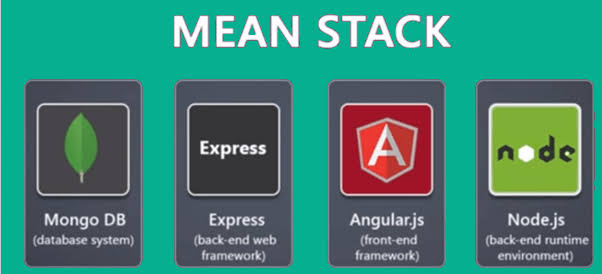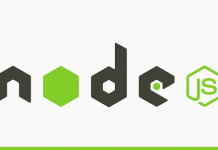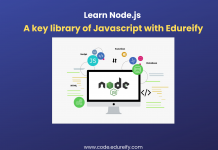In the rapidly evolving landscape of web development, staying ahead requires harnessing the power of robust and efficient technologies.
One such powerful combination is the MEAN stack – MongoDB, Express.js, AngularJS, and Node.js. MEAN stack development has gained significant popularity due to its flexibility, scalability, and ease of use.
In this blog post, we’ll delve into the components of the MEAN stack and explore how they work together to create dynamic web applications.
What is the MEAN Stack?
The MEAN stack is a collection of JavaScript-based technologies used for building dynamic web applications. Each component of the MEAN stack serves a specific purpose, and together they form a cohesive development environment.
- MongoDB: MongoDB is a NoSQL database that stores data in a flexible, JSON-like format. It is schema-less, allowing developers to store and retrieve data without predefined schemas, which makes it highly scalable and adaptable to changing requirements.
- Express.js: Express.js is a minimalist web application framework for Node.js. It provides a robust set of features for building web and mobile applications, including routing, middleware support, and template engines. Express.js simplifies the process of building server-side logic and handling HTTP requests/responses.
- AngularJS (or Angular): AngularJS, developed by Google, is a front-end JavaScript framework for building dynamic single-page web applications. It extends HTML with additional attributes and provides data binding and dependency injection, making it easier to build interactive user interfaces.
- Node.js: Node.js is a server-side JavaScript runtime environment built on Chrome’s V8 JavaScript engine. It allows developers to run JavaScript code on the server, enabling the development of fast and scalable network applications. Node.js is known for its event-driven, non-blocking I/O model, which makes it ideal for building real-time applications.
Advantages of Using the MEAN Stack
JavaScript Everywhere: One of the key advantages of the MEAN stack is that it uses JavaScript for both client-side and server-side development. This allows developers to write code in a single language throughout the entire stack, streamlining the development process and reducing context switching.
Full-stack Development: With the MEAN stack, developers can work on both the front-end and back-end components of an application using the same set of technologies. This promotes collaboration, reduces development time, and enables teams to build feature-rich applications more efficiently.
JSON-based Communication: Since all components of the MEAN stack communicate using JSON (JavaScript Object Notation), data can be easily exchanged between the client and server. This simplifies the development of RESTful APIs and enables seamless integration between different parts of the application.
Scalability and Performance: The MEAN stack is designed for scalability and performance, making it well-suited for building high-traffic web applications. MongoDB’s horizontal scaling capabilities, coupled with Node.js’s non-blocking I/O model, ensure that applications built with the MEAN stack can handle a large number of concurrent users efficiently.
Getting Started with MEAN Stack Development
To get started with MEAN stack development, you’ll need to have a basic understanding of JavaScript, HTML, and CSS. Here’s a step-by-step guide to building your first MEAN stack application:
- Install Node.js: Begin by installing Node.js on your development machine. Node.js comes with npm (Node Package Manager), which you’ll use to install additional packages and dependencies for your project.
- Set Up MongoDB: Install and configure MongoDB on your system. MongoDB provides detailed documentation on how to install it on various platforms.
- Create an Express.js Application: Use the Express.js generator to scaffold a new Express.js application. This will create the basic structure for your server-side code, including routes, middleware, and configuration files.
- Integrate AngularJS: Add AngularJS to your project by including the AngularJS library in your HTML files. You can then start building the client-side components of your application, such as controllers, directives, and services.
- Connect to MongoDB: Use Mongoose, a MongoDB object modeling tool for Node.js, to connect your Express.js application to MongoDB. Mongoose provides a straightforward way to define schemas, perform CRUD operations, and interact with your MongoDB database.
- Build Your Application: With the basic setup in place, start building out the features and functionality of your application. This may include creating API endpoints, implementing user authentication, and designing the user interface.
- Test and Deploy: Once your application is complete, thoroughly test it to ensure that it functions as expected. You can then deploy your application to a hosting provider or cloud platform of your choice, such as Heroku, AWS, or Microsoft Azure.
Conclusion
The MEAN stack offers a modern and efficient approach to web development, allowing developers to build feature-rich applications using JavaScript across the entire stack.
By leveraging MongoDB, Express.js, AngularJS, and Node.js, developers can create scalable, high-performance web applications that meet the demands of today’s users.
Whether you’re building a simple blog or a complex enterprise application, the MEAN stack provides the tools and flexibility you need to bring your ideas to life.
Master Your Coding Skills with BootSelf AI
If you're looking to enhance your coding abilities and upskill in artificial intelligence, look no further than the BootSelf AI app. This innovative platform provides AI-based coding lessons that are tailored to your individual learning pace.
Available on both iOS and Android, you can download the BootSelf AI app and start mastering coding skills today:









